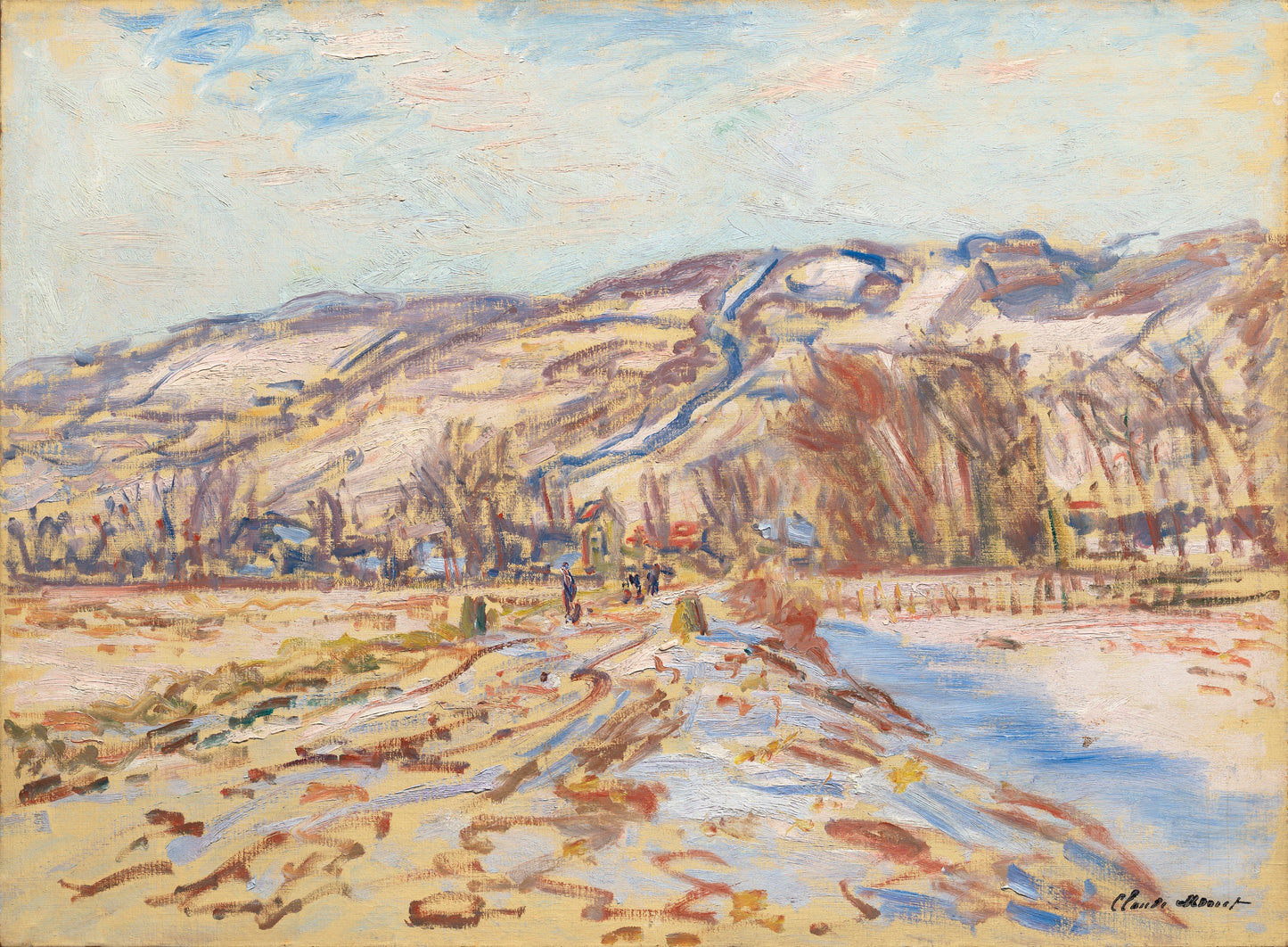Claude Monet, a founding figure of the Impressionist movement, transformed the way we see and interpret the natural world. His dedication to capturing light, atmosphere, and the passage of time resulted in some of the most iconic and beloved paintings in Western art.
Hiver à Giverny (1886) belongs to a pivotal moment in Monet’s life, when he had settled in the village that would become his lifelong muse. The artist purchased his home in Giverny in 1883, embarking on massive landscaping projects that included a water-lily pond, which would go on to become one of his most beloved subjects. This work, painted in the quiet solitude of his home gardens, transforms snow, shadow, and fading light into an impression of breathless stillness. Here, Monet does not merely depict a place, he distills the fleeting sensation of a moment into soft brushwork and tonal harmony.
Unlike the drama of historical painting, this canvas whispers. It reflects Monet’s enduring devotion to nature and his radical pursuit of light, atmosphere, and impermanence. Snow is not white, it is violet, gray, mauve. Trees do not stand, they shimmer. Through this quietude, Monet opens a new dimension of landscape painting: not just what is seen, but how it is felt.
Created during the mature phase of his Impressionist practice, Hiver à Giverny speaks to Monet’s lifelong philosophy: that truth lies not in detail, but in the sensation of light across time. This rare winter subject joins the canon of seasonal studies that revolutionized modern painting. This painting is not only a cornerstone of Impressionism but a masterwork of emotional perception.
Monet’s works reside in the world’s foremost institutions like the Musée d’Orsay, MoMA, the Met, Tate—and continue to shape the dialogue between nature, art, and memory.


